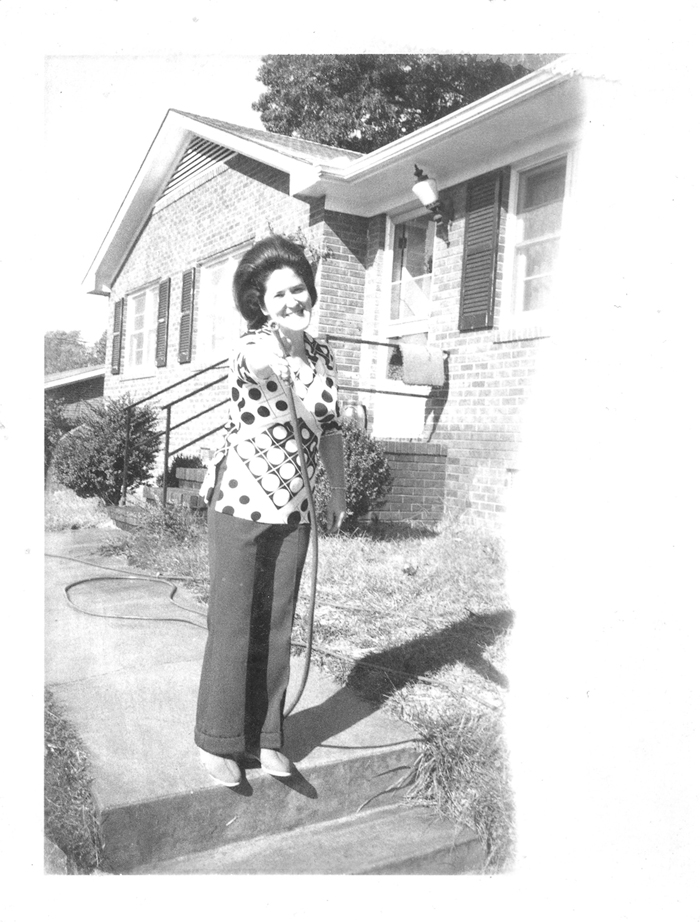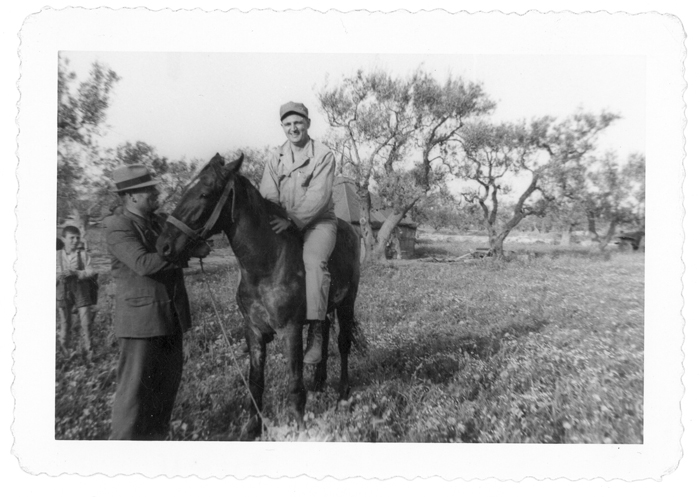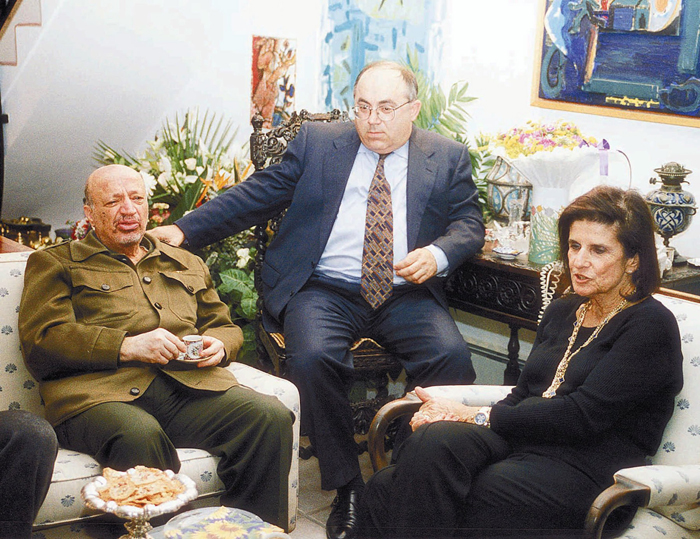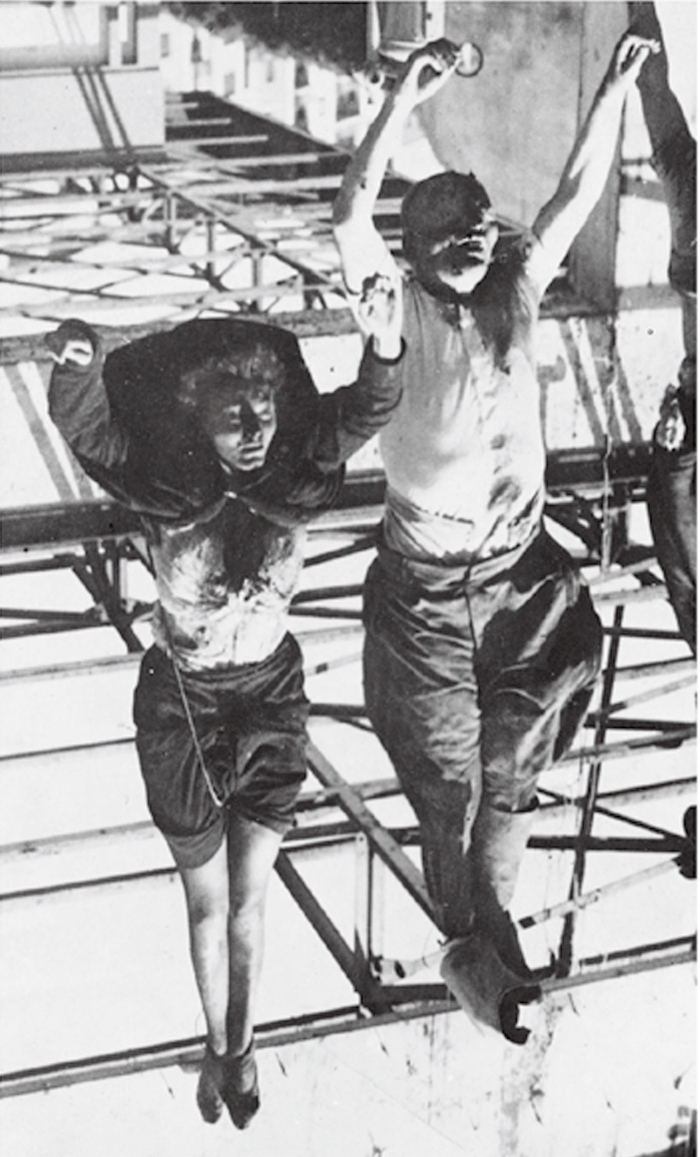
Phyllis Phillips, 1973
We’d like to think that powerful images are always the product of artistic genius, but more often than not it’s the knowledge we bring to an image that makes it compelling. Here is an image of my mother being playful. When I look at photographs of my mother, I sometimes believe I know what she was thinking. But in this image, I know precisely what she was not thinking. Checking the date on this photograph, I discovered a secret: my mother is pregnant with me, but only by days, so she doesn’t know it yet. I liked this picture anyway, but a simple piece of information and some quick math made me love it, because it allowed me literally to place myself inside the image. Now when I look at this picture I know that I’m right there too–can you see me?
Glenn Phillips, Curator

Untitled (Found Photograph), ca 1944
I discovered this whole box of photos in 1994 at a neighbor’s yard sale in Long Beach. The thought of this person’s memories being picked through for 5 or 10 cents an image was too much for me so I decided to negotiate with my neighbor to buy the whole box of photos. I think it cost me 5 bucks. There wasn’t a lot of information. I know that they belonged to a man named Anthony Smedley; that he was originally from a little town in South Dakota. The bulk of the pictures were taken by him while he was stationed in Europe (mostly Italy) during World War II. The picture that I’m talking about here is one of him near the encampment where his regiment was stationed. There’s a field filled with those red poppies that you see in Europe. I was told once that the poppies are used as a symbol to honor dead soldiers, so I find it particularly ironic that there would be all these red poppies there. He’s astride a horse that’s being held by a man who’s clearly one of the locals, an Italian, and he’s smiling. It seems like he was having a great time in Italy. This was 1944 or 1945, when the war was winding down. I got the sense that this was the pivotal time in this man’s life, and I often times will look through the photos and try to imagine his relationships to some of the other soldiers in the pictures. There are some who are young, there are some who are older. I wonder how many of these men came from places like South Dakota, and how this really must have affected their lives at that time.
Kristina Newhouse, Curator

Palestinian leader Yasser Arafat offers condolences to Leah Rabin and family friend Yossi Ginosar, center, 1995. Courtesy Associated Press
This picture was published in The Los Angeles Times after an Israeli extremist shot Prime Minister Yitzhak Rabin. Prior to his assassination, Rabin had covered some ground in negotiating peace with then-leader of the Palestinian Authority Yasser Arafat. The tension at every step of the meetings of the two longtime enemies had been palpable. Their unprecedented and unexpected handshake, the first ever symbolic gesture of benevolence, made news, although it was not the sealing of any agreement. That made this photograph even more striking. It is not a formal, political event. This is not a visit to enemy headquarters. Body language describes these three people as cozy, informal, intimate. Comfortable with each other. With cookies on the table, they are chatting the family way: simultaneously. Arafat is holding his cup of espresso as a somewhat tired uncle. If I did not know who they are, I’d think it a family photo.
Eva Forgacs, Art Historian

Untitled (A-Line), 2002, by Adam McEwen Courtesy of the artist and Nicole Klagsbrun Gallery
The appropriation by Adam EcEwen of this infamous war photograph makes for one of the most exhilarating images I have seen in some time. The 1945 photo documents the execution and subsequent hanging of Benito Mussolini and lover Clara Petacci in front of a gas station in a small Milan square. Cropped and enlarged to outsized proportions, the image, turned on its head, presents a radically different read from the original, transformed from brutal public hanging into a delirious private moment. When I view this work two competing narratives fight for dominance. The first is the fulfillment of a lover’s suicide pact, which suggests the couple jumping to their deaths in an instant of willful abandon; the other presents a couple of bloodied angels soaring high in the sky, their rapturous spectral gaze fixed firmly on a heavenly prize.
Ciara Ennis, Curator
